12 Wild Animals in Afghanistan [Wildlife in Afghanistan]
Want to know more about wildlife in Afghanistan?
Discover 12 wild animals in Afghanistan in this post, as well as interesting facts about them. 🇦🇫
TABLE OF CONTENTS
- Learn All About Afghan Animals
- Native Animals from Afghanistan
- Endangered Animals of Afghanistan
- What is the National Animal of Afghanistan?
- How Many Animals Native to Afghanistan?
- Are there tigers in Afghanistan?
- Do they have bears in Afghanistan?
- Are there wild horses in Afghanistan?
- More About Animals in the World!
Learn All About Afghan Animals
Ready to learn all about Afghan animals?
I’ve always been fascinated by animals, and by how they can be so different from one country to another. In this guide, we’ll focus on the many animals Afghanistan has on the land, in the sky, and underwater.
I’ve split the guide into 7 categories:
- Native animals from Afghanistan
- Endangered animals of Afghanistan
- What is Afghanistan national animal?
- How many animals native to Afghanistan?
- Are there tigers in Afghanistan?
- Do they have bears in Afghanistan?
- Are there wild horses in Afghanistan?
Let’s dive in right away with our first category!
Native Animals from Afghanistan
Afghanistan is a mountainous country located between Central and South Asia. It is bordered by Iran, Pakistan, Turkmenistan, Uzbekistan, Tajikistan, and China, and its capital city is Kabul, which counts more than 4,600,000 inhabitants.
An interesting part of the country that I wanted to tackle is its wildlife. In light of that, I have listed the best of it, and I hope you will love learning what animals live in Afghanistan.
Here’s the Afghanistan animals list.
1. Snow leopard
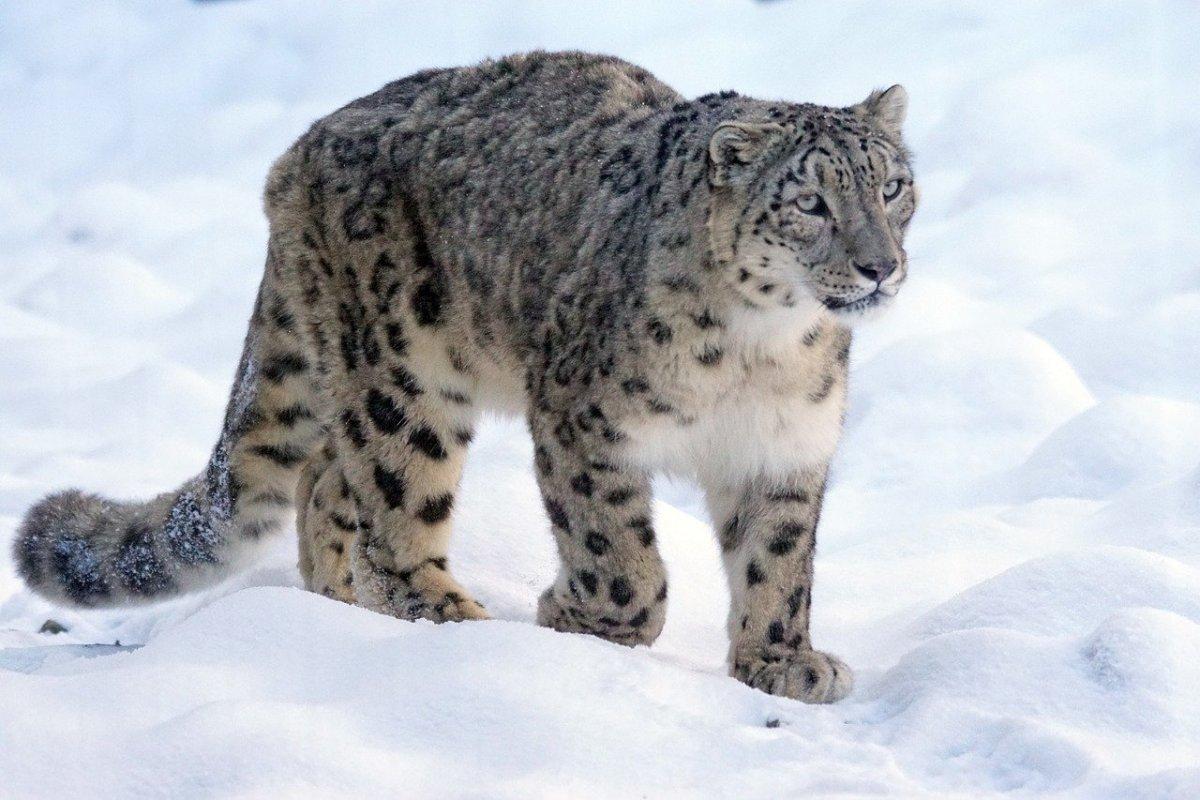
- Name: Snow leopard
- Scientific name: Panthera uncia
- Conservation status:
The snow leopard is also known as the ounce, and even though you can find it in northern Afghanistan’s mountains, it is very elusive.
There are less than 10,000 snow leopards in the world, and this number is sadly expected to decrease by about 10 percent by 2040, mostly because of poaching and habitat destruction as well as infrastructural developments. Snow leopards can only be found in heights, from 3,000 m / 9,800 ft to 4,500 m / 14,800 ft, from eastern Afghanistan to southern Siberia and eastern China.
2. Himalayan black bear
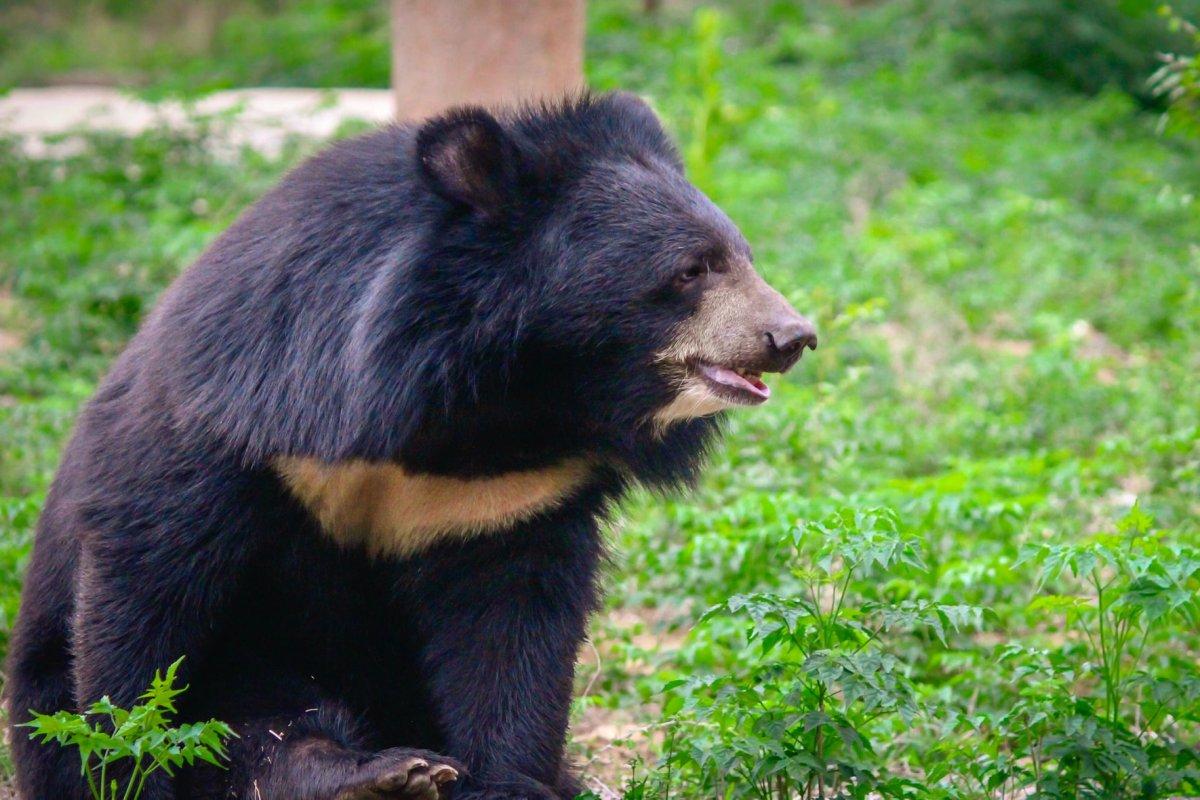
- Name: Himalayan black bear
- Scientific name: Ursus thibetanus laniger
- Conservation status:
The Himalayan black bear is a subspecies of the Asian black bear. It can be found in the Himalayas, which reach Afghanistan. Similar to the snow leopard, these bears are quite elusive and quite rare in the country, and they are listed as vulnerable.
This bear can be differentiated from the classic Asian black bear by its longer and thicker fur as well as its smaller and whiter chest mark. Himalayan bears usually go up in the mountains during the summer and descend into tropical forests for winter.
3. Marco Polo sheep
- Name: Marco Polo sheep
- Scientific name: Ovis ammon polii
- Conservation status:
This animal definitely has a peculiar name. The Marco Polo sheep was named after 13th-century legendary explorer Marco Polo because the animal was described in “The Travels of Marco Polo”.
It is very famous for having very long and spiraling horns, which are in fact the longest horns of all sheep. The longest Marco Polo sheep horns ever recorded measured 1.9 m / 6.2 ft long, and weighed 27 kg / 60 lbs! They live in the mountainous part of Afghanistan.
4. Siberian musk deer
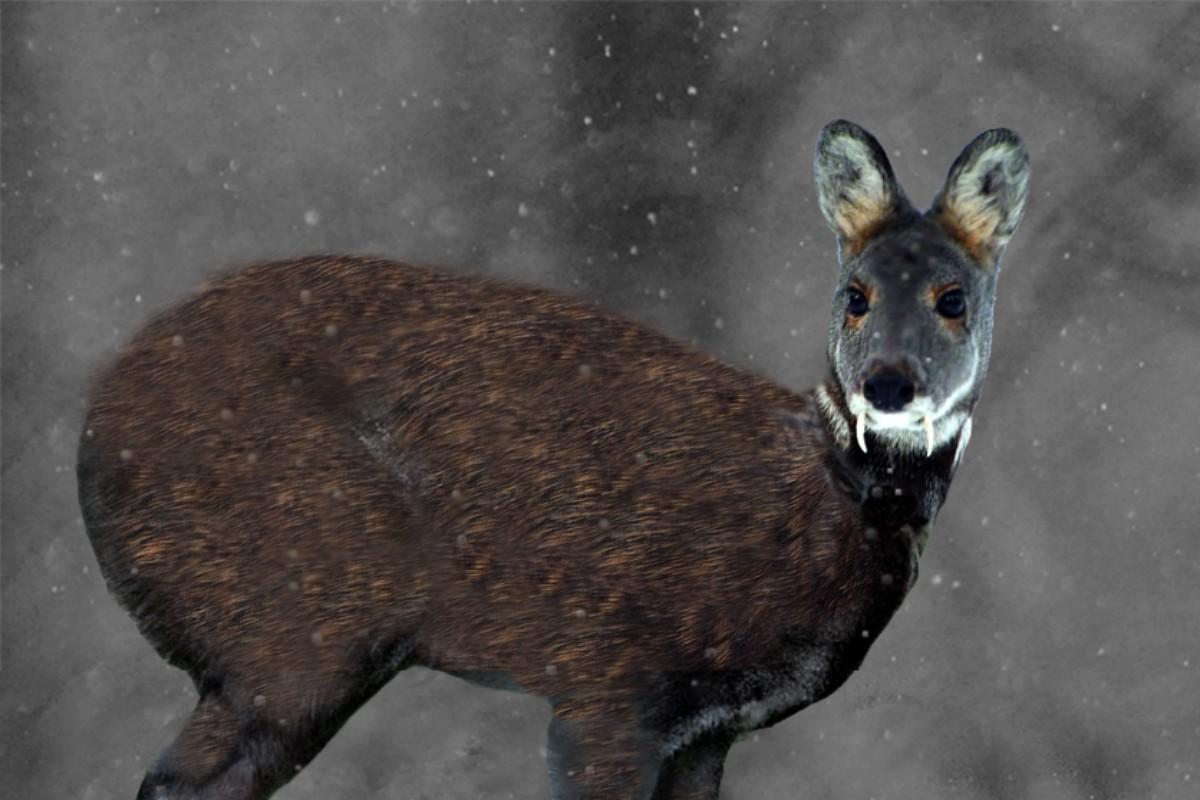
- Name: Siberian musk deer
- Scientific name: Moschus moschiferus
- Conservation status:
The Siberian musk deer originates from Siberia, obviously, but it is also present in Afghanistan. Generally speaking, it can be found in mountain forests, most notably in the taiga, in southern Siberia.
Siberian musk deers have a small shape and hide from predators by using tiny openings in the rocky terrain. They are also well-known for running incredibly fast from any of their predators. Don’t be surprised if you see a deer with fangs: the Siberian musk deer is one of them!
5. Markhor
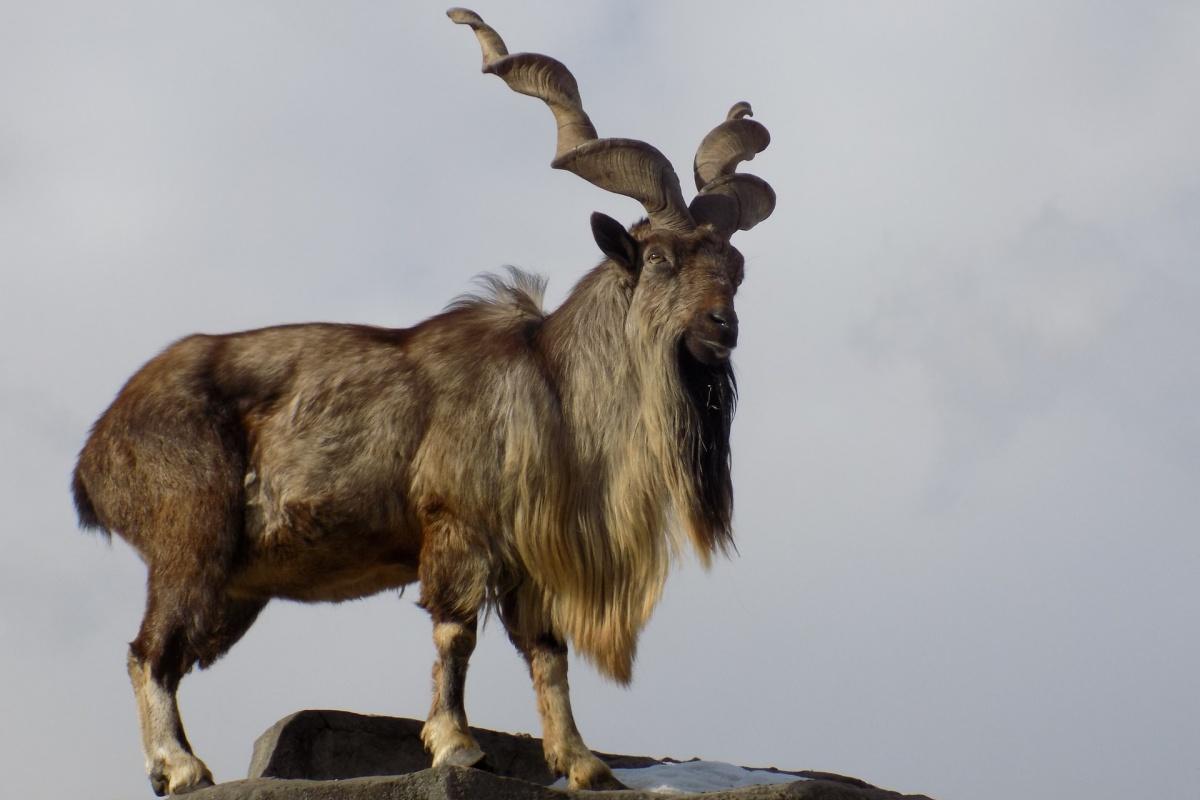
- Name: Markhor
- Scientific name: Capra falconeri
- Conservation status:
Markhors are truly a wonder of nature. They look like large goats and have very distinct curly horns. This species is native to CentraAsia l and the Himalayas and can be found in Afghanistan, despite it being the national animal of its neighbor Pakistan.
Markhors have to watch out for many predators in Afghanistan: golden eagles which prey upon young markhors, but also snow leopards, Eurasian lynxes, brown bears, and Himalayan wolves. Because of this, they can quickly spot and flee from predators.
6. Urial
- Name: Urial
- Scientific name: Ovis vignei
- Conservation status:
Urials are wild sheep that can be found in Central and South Asia, including, of course, Afghanistan. They are listed as vulnerable.
Urial males have large horns that end behind their heads. Their female counterparts have shorter and compressed horns. You will find urials living up to 4,500 m / 14,800 ft high, and they generally prefer grassland and gentle slopes. Their mating season begins in September, during which rams select 4 to 5 ewes, which give birth 5 months later.
7. Wild goat
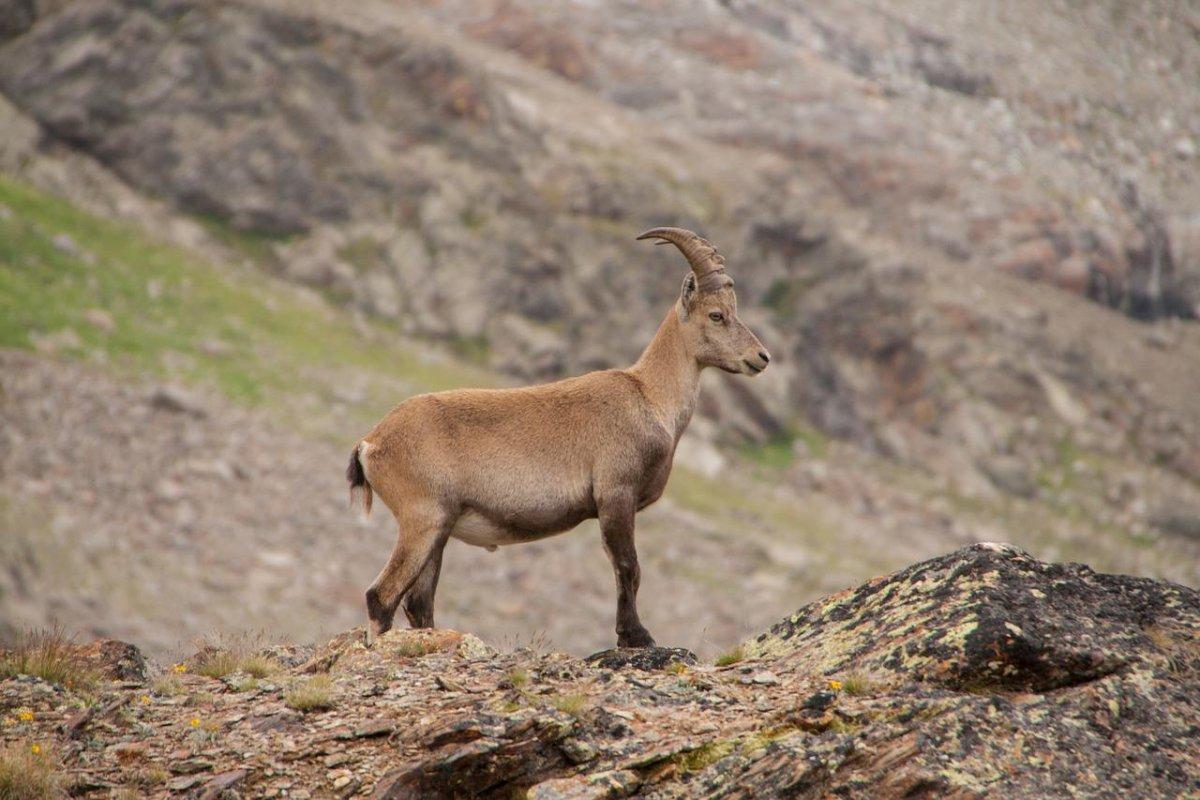
- Name: Wild goat
- Scientific name: Capra aegagrus
- Conservation status:
The wild goat, also known as the common ibex, inhabits forests and rocky areas, from Turkey in the west to Pakistan in the east. Its biggest threat is poaching, destruction, and degradation of habitat, and it is one of the ancestors of the domestic goat.
Their gestation period averages around half a year, and when it is time to leave the maternal herds, it is the older males that drive the younger ones. Wild goats usually live for 12 to 22 years.
8. Gray wolf
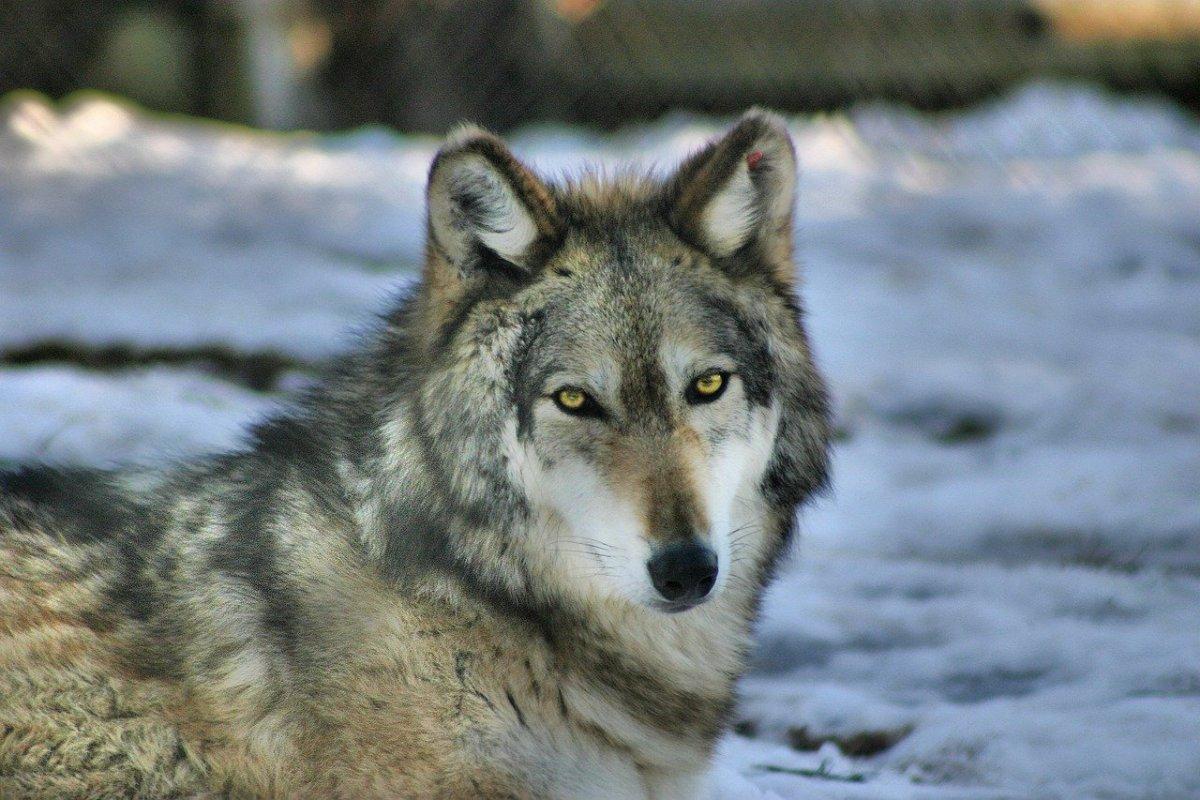
- Name: Gray wolf
- Scientific name: Canis lupus
- Conservation status:
Wolves are spread all throughout Eurasia and North America, and “Canis lupus” includes more than 30 subspecies. They are the largest existing canids, and they can also be found in Afghanistan.
The gray wolf is famous for being specialized in cooperative game hunting: it is a very social animal with a highly advanced expressive behavior that only hunts with its group. There are currently around 300,000 wolves on the planet, listing them as “Least concern”.
9. Striped hyena
- Name: Striped hyena
- Scientific name: Hyaena hyaena
- Conservation status:
The striped hyena is a famous species of hyena that can be found in North and East Africa, the Middle East, the Indian subcontinent, the Caucasus, and Central Asia. This includes Afghanistan.
The global striped hyena population is estimated to be less than 10,000, and this number is expected to decrease by 10 percent over the next 3 generations. Striped hyenas are constantly persecuted and face a decline in their prey base, making their future very uncertain.
10. Long-tailed marmot
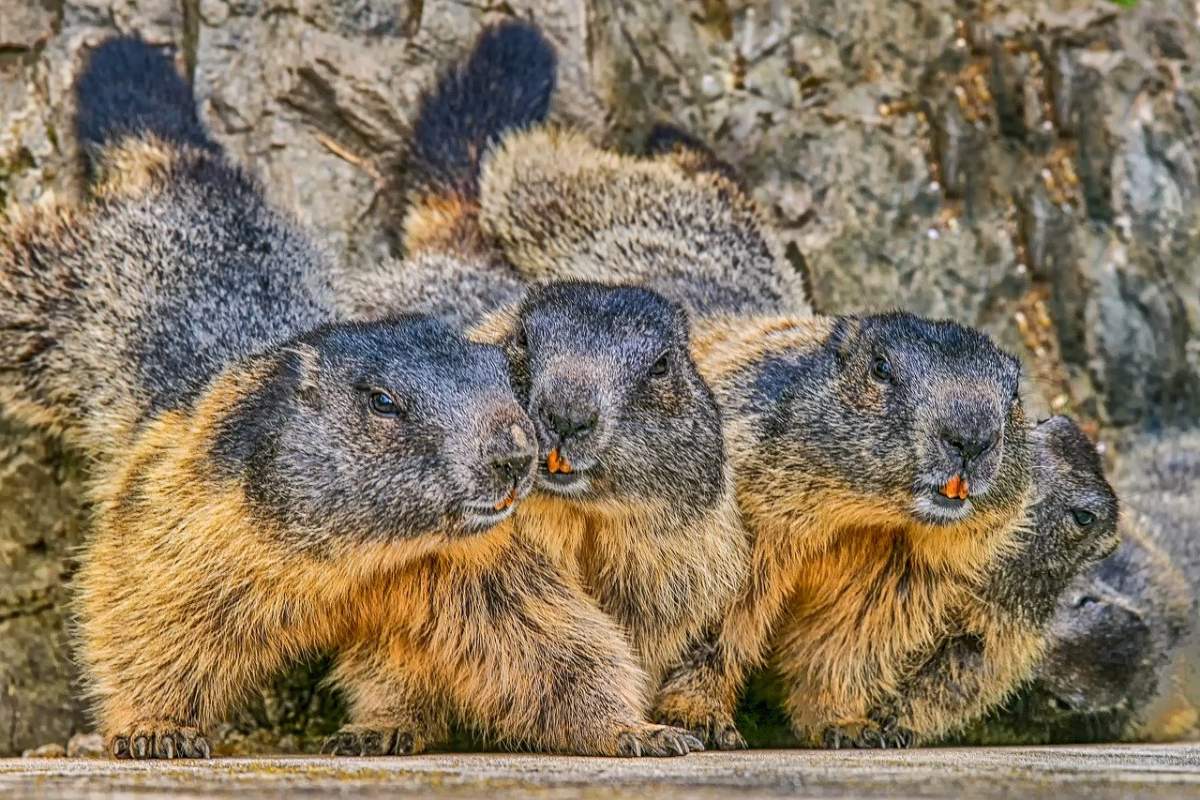
- Name: Long-tailed marmot
- Scientific name: Marmota caudata
- Conservation status:
The long-tailed marmot is one of the cutest animals you will find in Afghanistan. It can mostly be found in mountainous regions in Central Asia, in open or lightly wooded habitats.
As you can see in its name, this species is easily recognizable from other marmots due to its long tail. These marmots live in large groups, even though they only have 1 partner each. They prefer to live as a group to warn each other when a predator comes close, most notoriously a snow leopard or a lynx.
11. Eurasian lynx
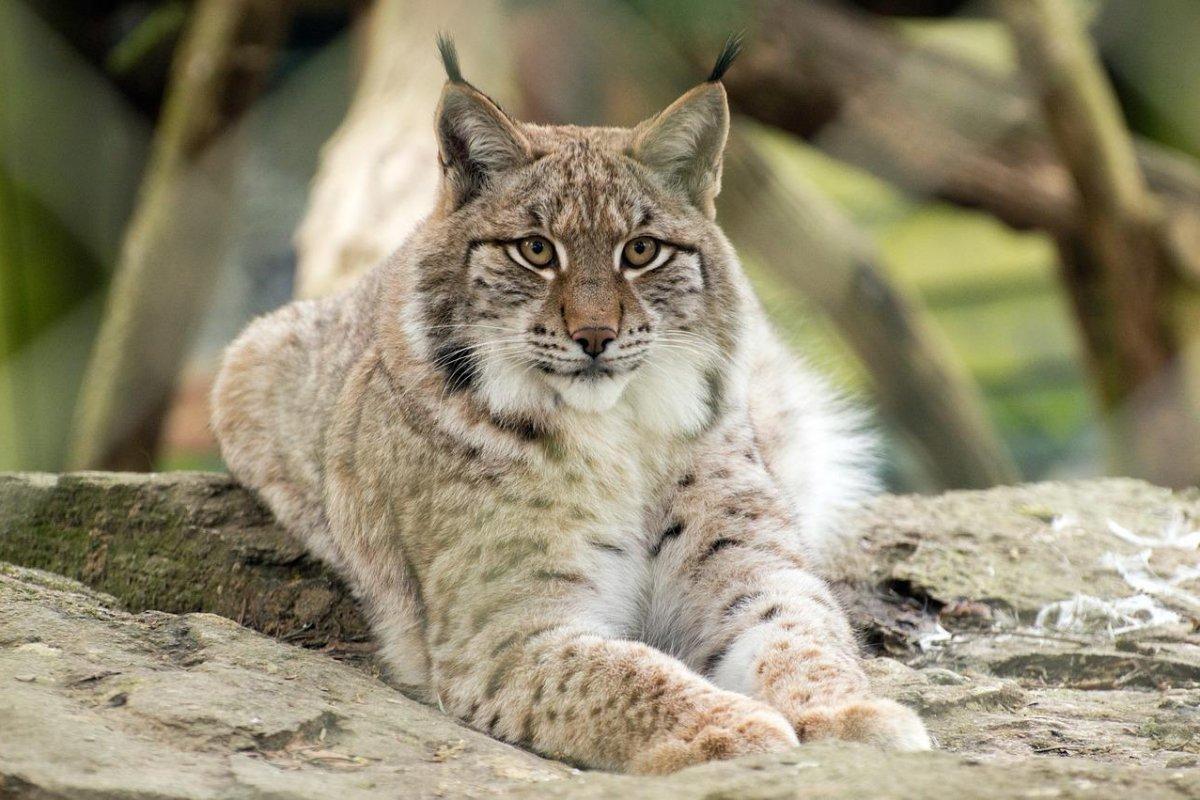
- Name: Eurasian lynx
- Scientific name: Lynx lynx
- Conservation status:
The Eurasian lynx is a medium-sized wild cat. You can find it very high in altitude in the temperate and boreal forests anywhere from Central Europe to Central Asia and even Siberia. It typically lives at around 5,500 m / 18,000 ft, and you can find it in Afghanistan.
Its coat is quite short and either reddish or brown. The fur evolves during winter as well, becoming much more gray and much thicker.
12. Pallas’s cat
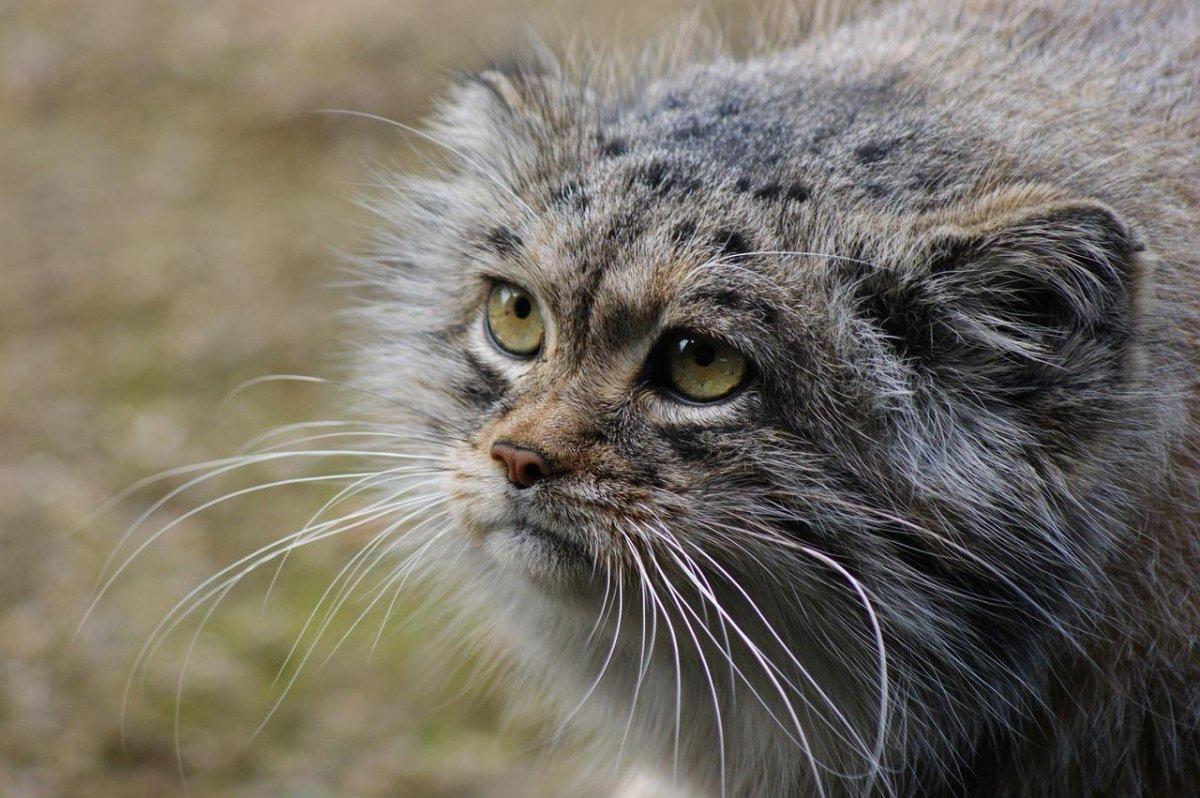
- Name: Pallas’s cat
- Scientific name: Otocolobus manul
- Conservation status:
Pallas’s cats are also known as “manuls”. They are small wild cats with long gray fur. They are named this way because they were first described by Peter Simon Pallas in 1776, in the vicinity of Lake Baikal.
These cats like the continental climate and often hide in rock crevices and burrows. They can be found in lots of regions across East and Central Asia. They are solitary and eat small mammals by pulling them out of their burrows with their paws.
—
So there you have them, these were my 12 Afghanistan wildlife animals. I hope you enjoyed this list and that you learned something new today.
In case you want to learn more about animals in the country, feel free to keep reading, as I still have lots of things to tell you about:
Endangered Animals of Afghanistan
This is definitely the saddest part of the list, but it is very important to raise awareness. Because of this, let’s go through the list of endangered animals in Afghanistan, from extinct in the wild to endangered.
Here are the animals in danger of extinction in Afghanistan.
- Asiatic cheetah
- Caspian tiger
- Asiatic lion
- Paghman mountain salamander
- White-rumped vulture
- Sociable lapwing
- Siberian Crane
- Amu darya shovelnose sturgeon
- and 1 more…
- Tiger
- Indian softshell turtle
- Egyptian vulture
- Steppe eagle
- Saker falcon
- and 7 more…
To see the full list of endangered species in Afghanistan, head over to the International Union for Conservation of Nature’s Red List.
What is the National Animal of Afghanistan?
The national animal of Afghanistan is the snow leopard.
Snow leopards are hidden in the heights of the mountains, mostly in the northern part of Afghanistan, and it is very hard to catch them on video.
The national bird is the golden eagle, one of the planet’s most famous and recognizable birds of prey.
Afghanistan also has a national dog, the Afghan hound! It has a narrow face and long fur on the ears, sides, and legs.
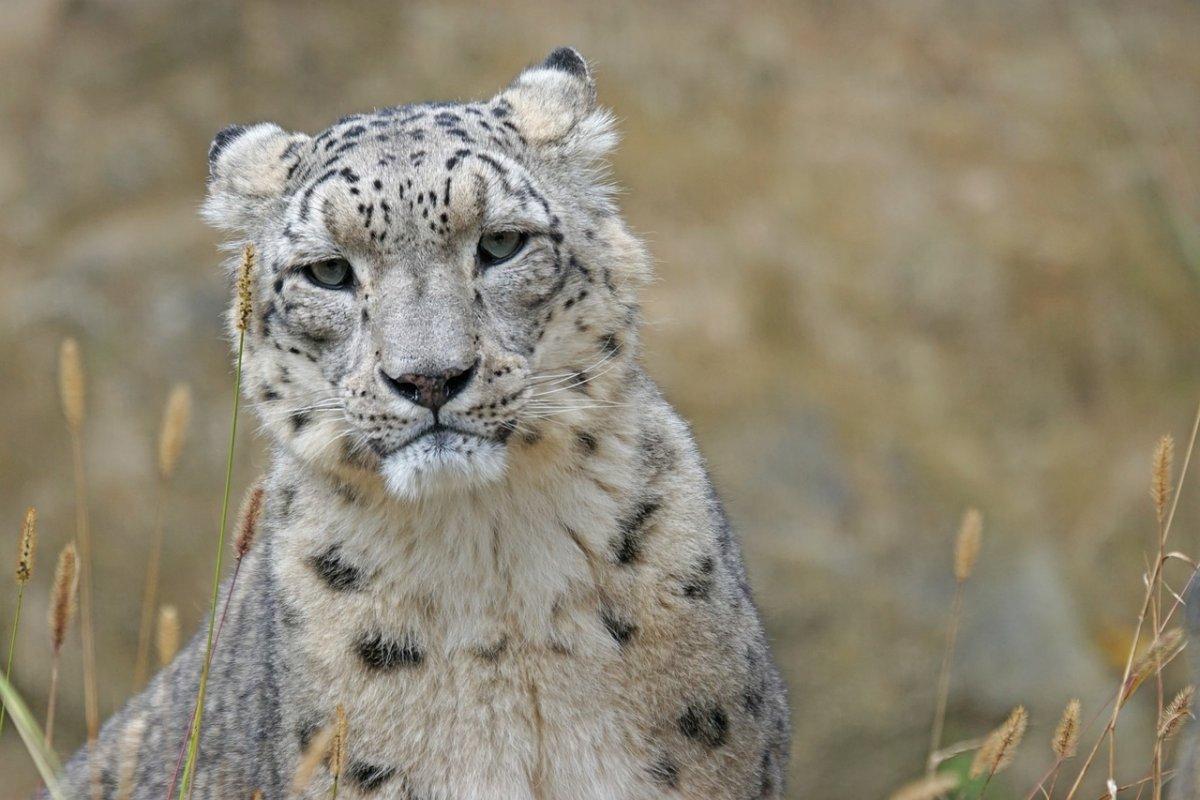
How Many Animals Native to Afghanistan?
What is the diversity of native Afghanistan animals?
Let’s look at the total number of species of Chordata (mammals, birds, fishes, and reptiles).
Total number of animal species in Afghanistan: 768 (4,927 in total in West and Central Asia)
Are there tigers in Afghanistan?
There are indeed tigers in Afghanistan. They are categorized as endangered.
However, the most famous one of them was the Caspian tiger. It used to roam eastern Turkey, Iran, the Caucasus, Central Asia, and the Xinjiang region in China, but it is now extinct. Many of them were killed after taking domestic livestock or for poaching and selling their skins, sadly.
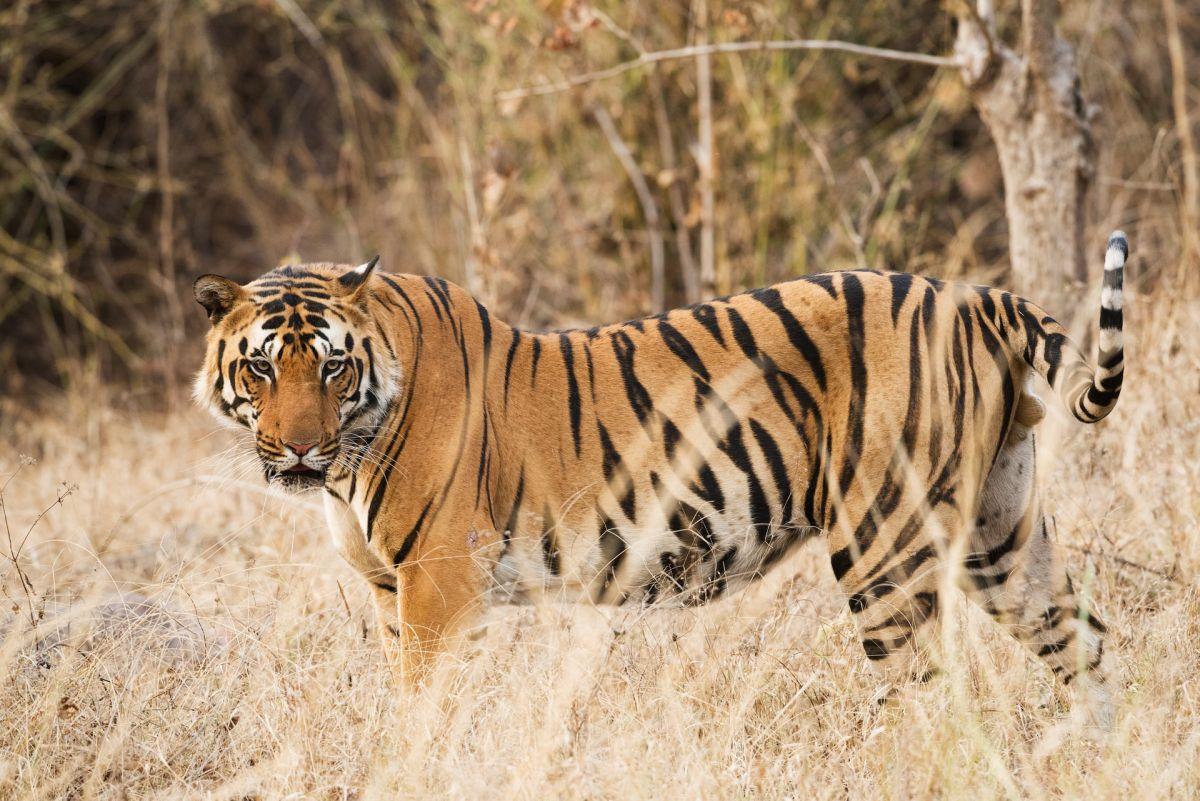
Do they have bears in Afghanistan?
There are definitely bears in Afghanistan! In this list, I talked about the Himalayan black bear, but it is not the only one.
The Himalayan brown bear can mostly be found in the north of the country, as well as in northern Pakistan, northern India, western China, and western Nepal. It is the largest animal in the Himalayas and its colors range from sand to red-brown.
Are there wild horses in Afghanistan?
The only real species of wild horse that exists today is some of the feral horses. Lots of them are domestic livestock that is free to roam, but some of them remain wild. They are the offspring of previous domesticated horses that either escaped or were voluntarily set free and survived.
The only traces of wild horses in Asia are in Cape Toi, Japan, and in Sri Lanka, so there are no wild horses in Afghanistan.
More About Animals in the World!
Loved these Afghanistan animal facts? Want to see what animals live in other countries?
Then check out these posts:
Or click here to see ALL the facts up on the blog! Spoiler alert: there’s A LOT of them.
Share the knowledge! Click on the buttons below to share information about these popular animals in Afghanistan with your friends, and help them learn more about the world 🙂
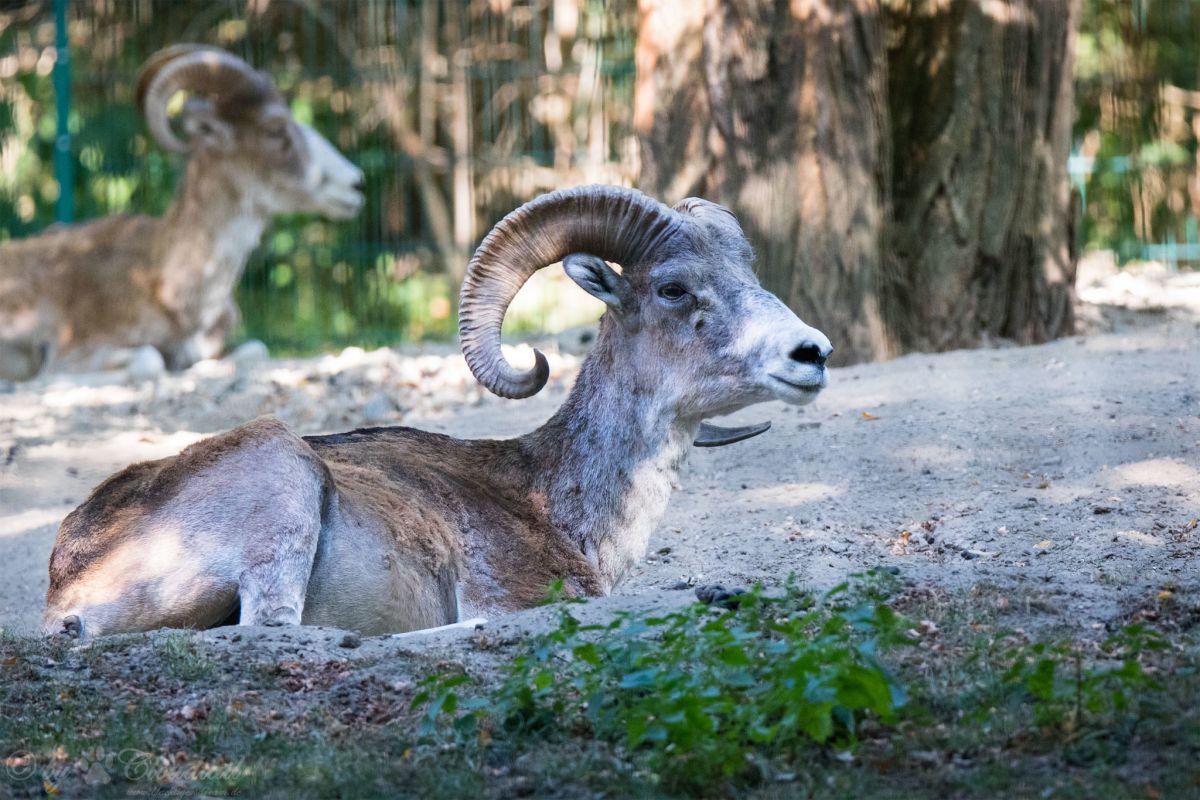
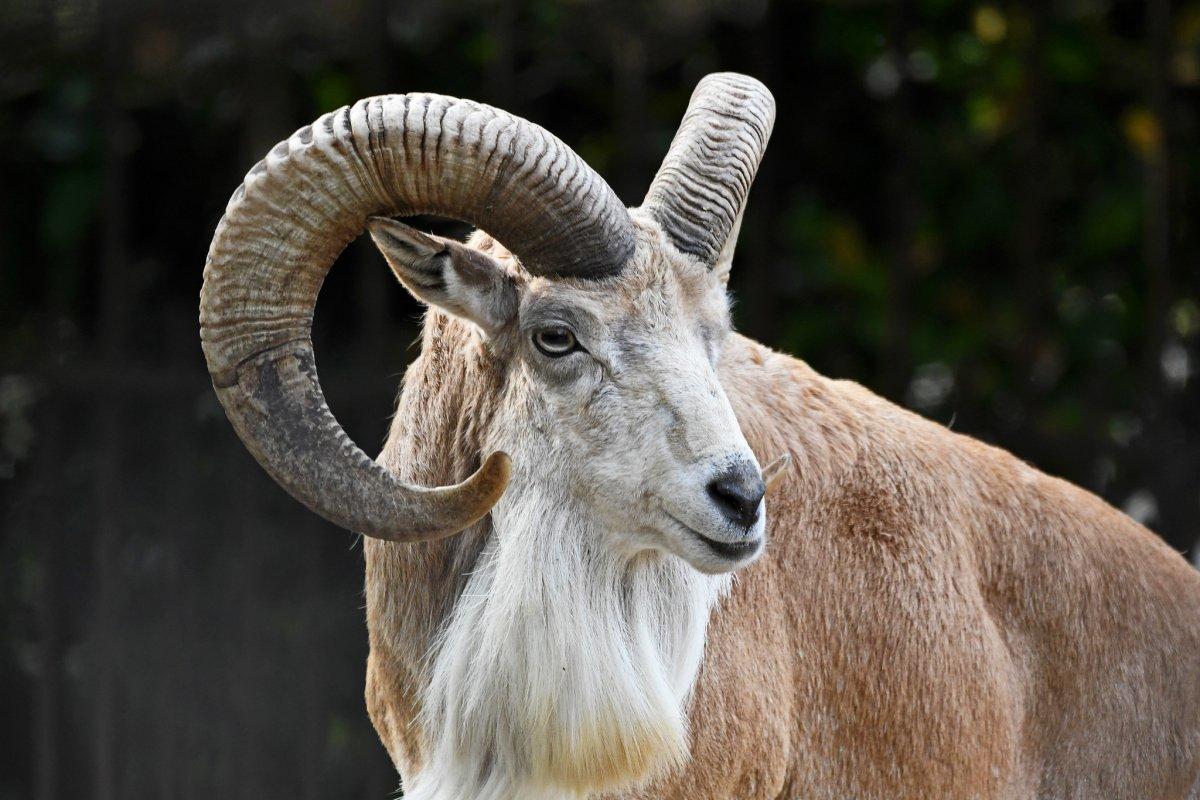
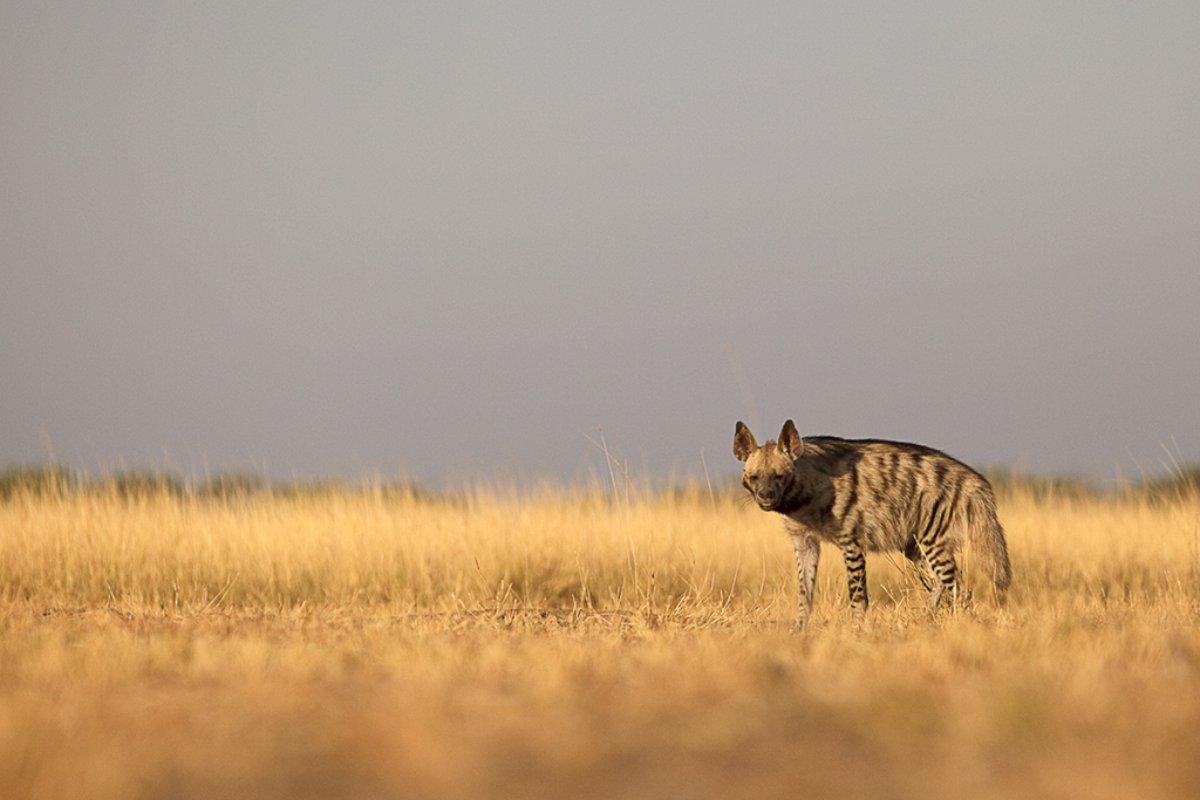

![13 Wild Animals in Guinea [Wildlife in Guinea]](https://www.kevmrc.com/wp-content/uploads/2022/12/13-wild-animals-in-guinea.jpg)
![20 Wild Animals in England [Wildlife in England]](https://www.kevmrc.com/wp-content/uploads/2022/10/20-wild-animals-in-england.jpg)
![18 Wild Animals in Cambodia [Wildlife in Cambodia]](https://www.kevmrc.com/wp-content/uploads/2022/12/18-wild-animals-in-cambodia.jpg)